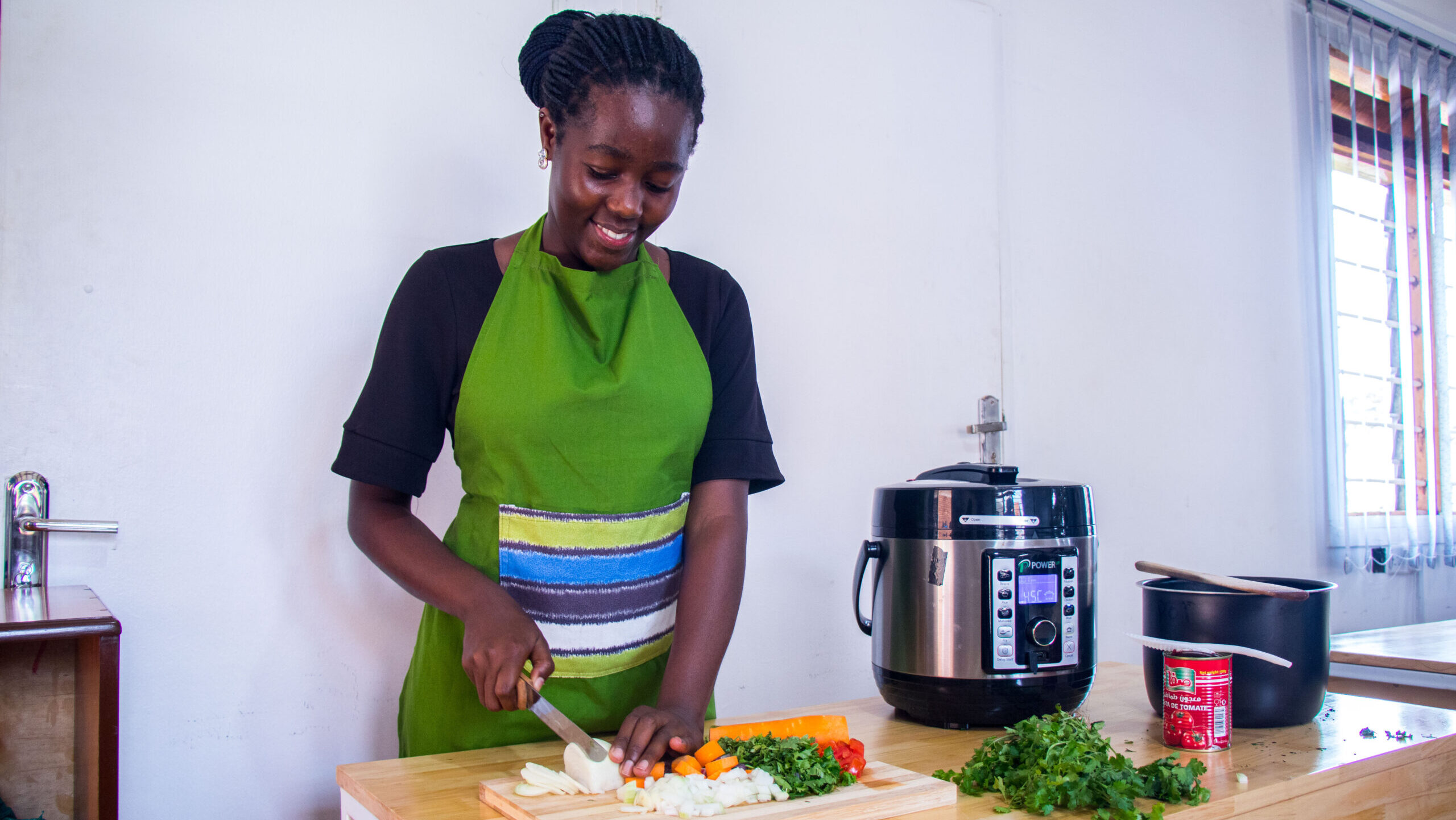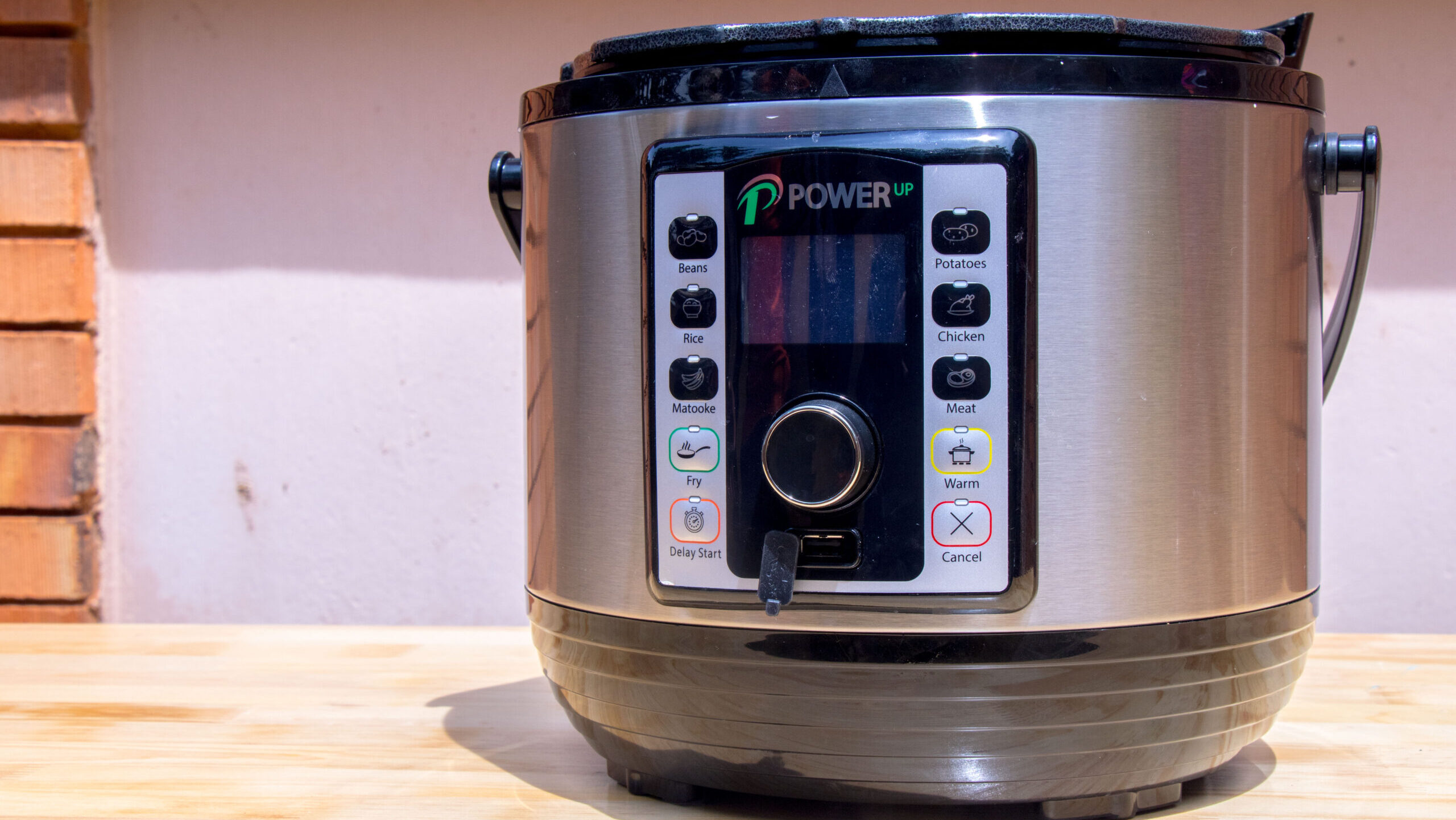UpEnergy: Leveraging Carbon Markets to Combat Energy Poverty and Climate Change
UpEnergy is a social enterprise offering access to technologies, including cleaner cooking solutions, to low-income communities. With an international team based in Uganda, UpEnergy invests in developing strong local teams that work closely with the communities they serve to ensure closely monitored climate impact.
CCA spoke with Matt Evans, a Founder and the current Board Chair of UpEnergy, about the organization’s impact-driven approach and shift to electric cooking devices.
This interview is part of a series of conversations CCA is having with business leaders across the clean cooking sector.

Clean Cooking Alliance (CCA): Can you describe UpEnergy’s services and business model?
Matt Evans (Evans): UpEnergy’s mission is to fight energy poverty and climate injustice by channeling global climate finance resources toward projects that benefit people most at risk from climate change. UpEnergy projects distribute multiple technologies that have benefits for low-income people, such as clean cookstoves, which have always been a core piece of our work. UpEnergy started with efficient charcoal stoves and is now attempting, in a difficult market, to move toward electric cooking as it offers a true decarbonization solution that leapfrogs gas and liquid fuels and delivers health benefits through improved air quality.
CCA: What is UpEnergy’s role in making projects happen?
Evans: UpEnergy was founded due to frustration around how little global climate finance flowed to projects that benefit low-income people in the Global South. Historically, a global carbon company would partner with a local organization to implement a carbon offset project. UpEnergy was founded in Africa in 2011 on the principal that an organization could best serve people in project countries by investing in local operations and integrating results-based project finance to support those operations. Carbon finance has been the form of results-based financing that funds most of UpEnergy’s projects.
We are involved in everything from product development and design to interacting with clients, distributing products, and the most difficult elements of supporting behavior change. UpEnergy is technology provider agnostic, so we do some manufacturing, but we typically prioritize local manufacturing partnerships with skilled workers and as many locally sourced materials as possible.
CCA: What are the defining characteristics of your customer base?
Evans: For clean cooking products, we have historically targeted low-income charcoal users, both urban and peri urban. Our focus now is broader, supporting institutions like schools and expanding into segments where electricity is relatively reliable and often produced from renewable sources, to deliver heavily subsidized electric products that enable fuel switching away from biomass.
On the investment side, we work with valued partners like Carbon Streaming to finance projects. We develop partnerships with carbon credit retailers and with companies who support UpEnergy through the purchase of voluntary units to achieve climate impact. These corporate partners typically seek to use credits consistent with their interest in supporting decarbonization and social outcomes for low-income people. We build partnerships with companies that allow us to structure projects that are often bespoke to their geographic needs, technology interests, and desire to support specific social impacts.

CCA: How are cookstove credits perceived compared to other types?
Evans: Climate finance is a huge potential source of support for addressing energy poverty, and cookstove projects are crucial for decarbonization efforts. Cookstoves cause roughly 2% of global emissions where, by contrast, all aviation is 3-4% of emissions but receives many billions in decarbonization investment. Near the African capitals where we work, we see real environmental devastation that is directly associated with inefficient charcoal harvesting, made worse by significant population growth. With cookstove credits, a buyer has the security of knowing that the emission reduction is for biomass that didn’t get combusted and turned into carbon emissions. This avoids some of the leakage and permanence questions that exist with other types of nature-based projects. This is in addition to the social impact and environmental justice considerations already discussed.
CCA: Why does UpEnergy focus on carbon credits for electric cooking?
Evans: Electric cooking represents a true leap-frog opportunity: low-income people don’t have to follow the path of wealthy nations by graduating from wood fuels to another unsustainable fuel like natural gas or high-carbon-intensity liquid fuels. In some markets, they can jump directly to electricity, which in many sub-Saharan African countries comes from renewable sources like solar, wind, and geothermal, or zero-carbon sources like hydroelectric.
Carbon finance is crucial to make this happen because cooks may find it difficult to switch to electricity, for two reasons: upfront cost and the challenges of adopting a new practice. Done right, the intervention requires much more capital to make the upfront cost low enough for families to consider switching to electric.
On the second point, it requires users to have a greater level of trust and understanding when transitioning to this new technology. To support new product adoption, we market the features and benefits of the product in creative ways and deploy wrap-around programming to support usage over time.
We also assess the consumer’s buy-in to decide if it’s right for them. We ask for a deposit to make sure users will value the electric cooker, and then evaluate what type of follow-up we can provide so users can achieve the maximum value with their new device.
Overall, electric cooking can deliver zero emission cooking, especially when paired with renewable energy. Support from the Global North for this climate impact is by far the best opportunity we have to get to scale.

CCA: How does UpEnergy monitor and report on carbon credits for clean cooking?
Evans: The need for accurate and reliable monitoring regimes and methodologies for measuring carbon reductions cannot be overstated. There is also a need to provide the transparency which the market requires to support projects, like clean cooking.
UpEnergy has implemented a scalable and robust digital ecosystem to streamline the monitoring, reporting, and verification process. This includes metered devices and an online-offline survey application. The baseline fuel is never metered and must be carefully weighed by researchers and auditors assessing carbon reductions of any project seeking to serve low-income individuals. This system is complemented by the automated collection of critical user data, which improves the relationship with the user and provides even greater transparency for emissions impact verification.
CCA: How can the sector continue demonstrating the high quality and integrity of credits from well monitored clean cooking projects?
Evans: First, it’s most important that cookstove carbon monitoring is rigorous, and understates the climate impact of projects conducted. Digital monitoring and verification are critical because there’s trust in digital methodologies and they can provide transparency.
Second, we need to identify ways to better tell the carbon credit story and document how peoples’ lives are benefitting from clean cooking technologies. I’ve heard too many Europeans and Americans espousing views on education and awareness to get buyers of carbon credits excited about simultaneously solving energy poverty and compensating for emissions.
At the same time, many people, including us at UpEnergy, sometimes allow our Global North biases to creep in, based on the privilege of already using metered fuels with clear emissions factors. For example, the assumptions and treatment of uncertainty around the carbon intensity of the marginal fuel saved in cookstoves often–unfairly and unscientifically, in our view–undervalue the climate contributions of the world’s poorest households, compared to the way the marginal emissions factors of grid electricity are treated by both carbon methodologies and by the Greenhouse Gas Protocol applied by companies buying carbon credits.
CCA: What advice do you have for other companies to scale?
Evans: UpEnergy has journeyed through 12 challenging years of adapting and innovating. The work started under the auspices of a non-profit spun out of the work of Kirk Smith at University of California Berkeley. Now it’s a social enterprise with an associated non-profit that has been able to reach millions of people. The journey has been marked by various operational challenges in the low-income countries where we work. It has faced periods of wavering climate ambition, and times when the Global North avoided cookstove projects due to preferences for metered baselines and fuels with more documentable carbon intensities. I guess the best advice would be to stay focused and curious about how best to empower local teams to achieve local impact. That is why UpEnergy’s ethos, grounded in persistence and continuous learning cycles, has been to try to keep an unwavering focus on the communities and consumers we serve.
